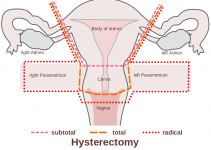Diabetes is a lifelong disease that involves a disruption of blood sugar levels, which the pancreas, produces to allow your body to store and use the sugar and fat after a meal.
Diabetes occurs when either the pancreas is unable to produce insulin, produces very little insulin, or when the body poses a resistance to insulin.
What is Diabetes Mellitus?
There are two types of diabetes mellitus: type 1 and type 2. Type 1 diabetes, known as juvenile diabetes, often develops in younger people. In type 1 diabetes, the body can no longer produce enough insulin.
Type 2 diabetes is known as adult-onset diabetes, which can develop in people at any age, but most often in middle-aged and older people.
Type 2 diabetes typically begins with insulin resistance. Over time, the body will be unable to produce enough insulin to keep up with the added demand.
How does it affect the menstrual cycle?
Diabetes is a serious condition that affects many women, and can have an effect on a woman’s reproductive health as well. The hormones that regulate the menstrual cycle can cause fluctuations in the blood glucose levels of the body.
These menstrual hormones have an effect on insulin sensitivity. These hormones, estrogen and progesterone, can disrupt the insulin hormone and cause the body to become more resistant to insulin during this time [1].
Therefore, if you have diabetes, during or around the time of your menstrual cycle, your blood glucose levels might rise for three to five days.
Increasing progesterone levels can also cause more food cravings, which can make managing your diabetes and food intake more difficult. These changes usually vary from person to person and month to month, so it may be difficult to monitor the effects.
For women with diabetes, rising blood glucose levels during the time of the menstrual cycle can make managing the disease more difficult.
Diabetes has a number of effects on a woman’s reproductive health, especially during the reproductive years. Women with diabetes are more prone to experiencing yeast infections.[2] It can also cause vaginal dryness and decreased sexual arousal.
During a woman’s perimenopause phase, women with diabetes may experience intense blood sugar swings as they approach the process of menopause.
Women with type 1 diabetes typically tend to begin menopause at an earlier time, and women with type 2 diabetes may begin menopause at a later time.
Another issue woman can have during menopause if they are diabetic is distinguishing between the symptoms of the two conditions. Symptoms of low blood glucose levels can mimic symptoms of menopause, such as hot flashes or moodiness.
Both high blood glucose levels and reduced estrogen as a result of menopause can lead to vaginal dryness, vaginal infections, and urinary tract infections.
The most important thing for diabetic women to do while going through menopause is to regularly monitor blood glucose levels to figure out if it may be the cause of their symptoms.
Women who have diabetes may need to exercise special care during their menstrual cycles in order to manage their condition.
Changes in blood glucose levels may vary from month to month, but monitoring the changes over time may help to deduce a pattern that can make managing it a little easier.
If blood glucose levels are consistently increasing before or during your menstrual cycles, you might need to inject more insulin or reduce carbohydrate intake. It is also best to stick to normal, balanced meals during this time.
For women on the contraceptive pill, the effects on blood glucose levels might be different when off the pill. Birth control pills can raise blood glucose levels, increasing your risk of diabetes complications if you stay on the pill for a consistent amount of time.[3]
Low blood sugar caused by hormones can lead to intensified symptoms of premenstrual syndromes, such as tenderness, bloating, and mood swings.
The best way to manage your diabetes is to carefully track your menstrual cycles and monitor the changes that result from your period each time.
Keeping track of your cycle can give you an indicator when you might be experiencing higher blood sugar levels than normal, and compare your cycles with your sugar levels to determine any trends that can help you prepare for managing it next time.
Adjusting your insulin can help in managing changes during the cycle. Including regular exercise during and around the time of your menstrual cycle is a good way to lower blood glucose levels as well.
References
- http://care.diabetesjournals.org/content/36/5/e70
- https://www.healthline.com/health/diabetes/diabetes-and-yeast-infections
- https://www.diabetes.co.uk/diabetes-contraceptive-pill.html




Please I started my menstruation on 1st of September 2017, and it stopped on the 3rd …..on 27th ,of September2017 my menstruation came out again, and stopped on the 29th ….I met my husband the day my menstruation stopped…..is it possible I got pregnant, and please when will my ovulation begins?…Thank
Hello Doris, please use the below link to calculate when you ovulate.
Hi, I didn’t see my period in April and I saw it on the 5th of May until 8th of May. It came back again on the 26th of May. Can you help me understand what’s going on?
Having two periods in one month which are less than 21 days apart, is cause for concern. It’s recommended that you get a medical assessment to determine what is happening.